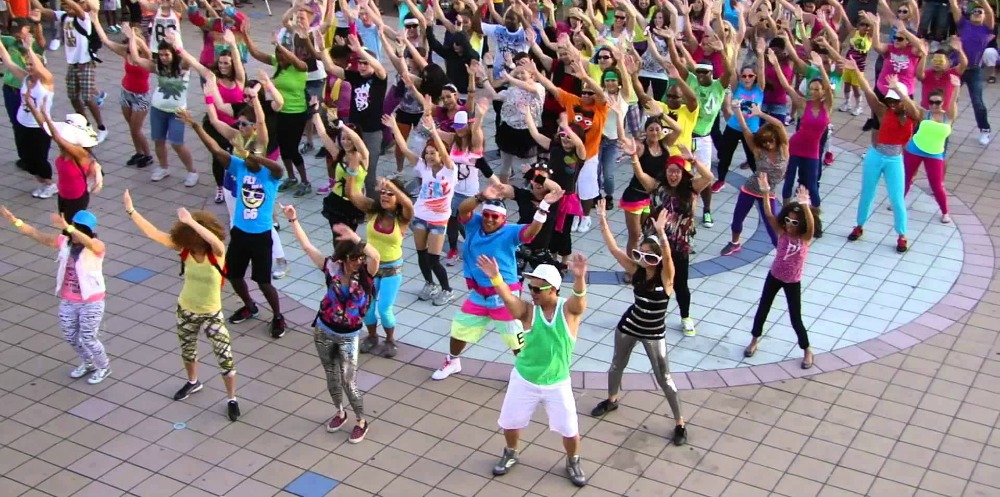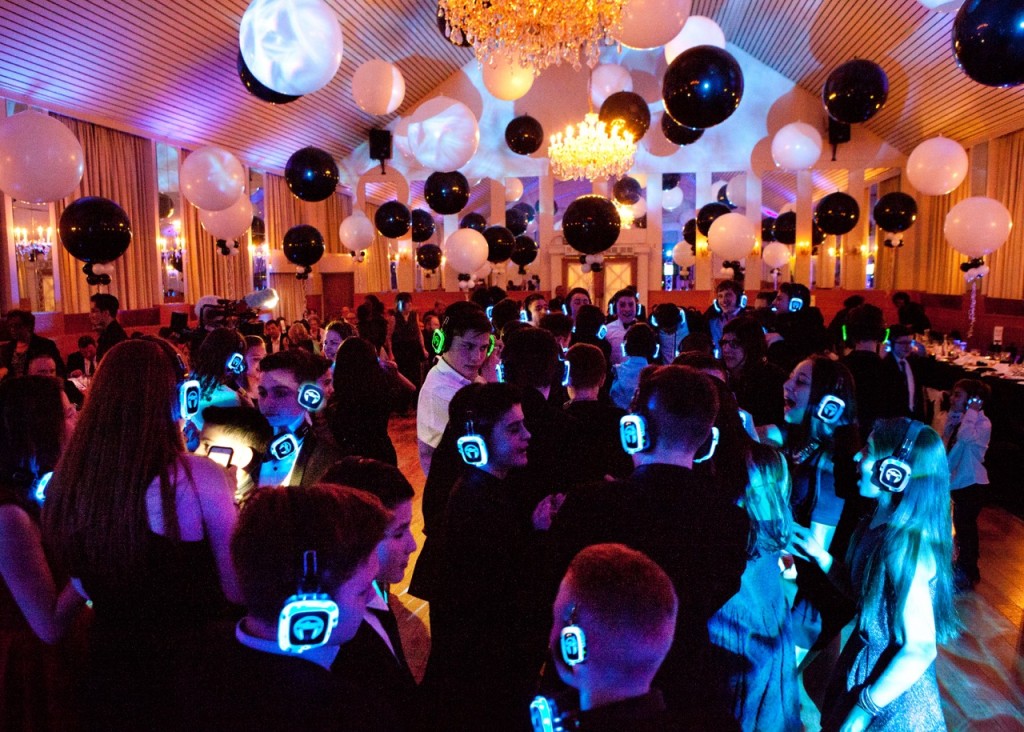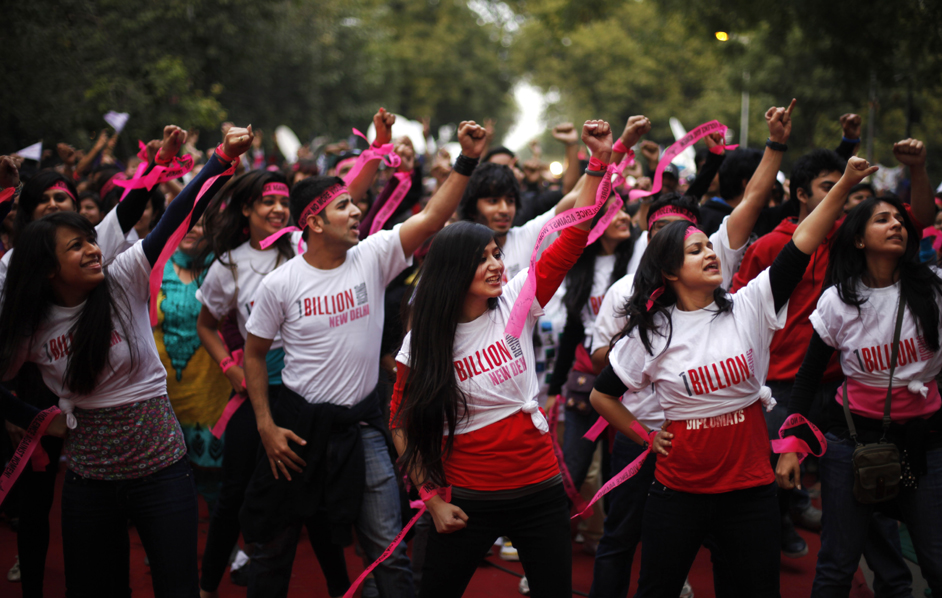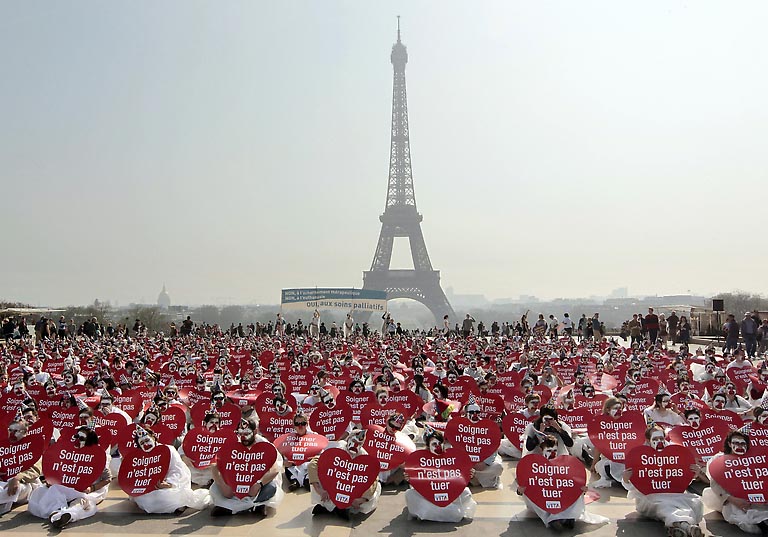It was the summer of 2003, and the residents of New York City were exposed to what would eventually become a worldwide phenomenon. And all they had to do was to show up at a particular time and location, and participate in a seemingly random act that had actually been choreographed before. This technique of participating in a random act in huge numbers came to be known as a flash mob.
The ‘What’ of Flash Mobbing
A flash mob consists of a group of people who assemble in a public place or a predetermined location, generally in huge numbers, and perform a seemingly pointless act for a brief period of time before dispersing quickly. The mode of organization of a flash mob is often through the medium of telecommunication, social media, or viral emails.
The first successful flash mob took place in 2003 in a Macy’s store in Manhattan and was organized by the then editor of Harper’s Magazine, Bill Wasik. Hundreds of New Yorkers entered the store in search of a ‘love rug’. In order to avoid the confusion that had led to the failure of a previously organized flash mob, Wasik distributed the participating flash-mobbers into different preliminary staging areas – four different Manhattan bars – where they received further instructions regarding the event and location just before it began.
After the success of this flash mob, about 200 people flooded the lobby and mezzanine of the Hyatt Hotel in synchronized applause for about fifteen seconds. Another significant incident included a shoe boutique in SoHo which was invaded by participants pretending to be tourists on a bus trip.
The Social Issues Research Centre, when talking of the first flash mob that was organized in London in August, 2003, examined the instructions given to the mobbers. The defining factors of the statement included a combination of military efficiency, the anonymity maintained throughout, and the rapid communication and organization through the internet. The most revealing statement out of the instructions given to the participants was that the mob is ‘just for fun’. The attraction of participating in an event so meticulously planned, and toward no recognizable end adds to the fun of this performance art, whether or not one contests or attempts to reason the purpose of the flash mobbing beyond anything other than a massive group participation activity.
Image courtesy– Yale
The ‘Why’ of Flash Mobbing
The purpose of a flash mob has often been contested, with different sets of opinions on the seemingly ‘random and irrelevant’ act. Why would one put in huge amounts of time and energy in organizing an event which would eventually involve scores of people participating in the flash mob?
One set of people would argue that the question of the purpose of flash mobs cannot be answered. Sean Savage, who documents various flash mobs on his website cheese bikini, in a statement to the Bergen Record following a flash-mobbing incident in New Jersey:
If anyone tells you they know what the point is, they either don’t know what they’re talking about or they’re lying.
Such a statement would quite obviously deter anyone from exploring the many variations within the art as well as the purpose of flash mobs; coordinating huge amounts of people in order to conduct a coordinate act takes not only a lot of effort and time, but meticulous planning and management of the participants in order to make the event successful.
Consequently, when asked about the goal of flash mobs, Bill Wasik, the then editor of Harper’s Magazine and the man behind the idea of the first flash mob, said that the goal was to…
…create an internet meme where people would simply be invited to do nothing to become a part of the next big thing.
He claimed that he created flash mobs as a social experiment, as well as to highlight the cultural conformity as well as the scramble to be a part of ‘the next big thing’.
However, the massive media attention that flash mobs attracted catapulted the phenomenon from the status of a social experiment to, literally, the next big thing. Everybody and their friends began to desire to become a part of a flash mob, and more and more such mobs began to be organised. It was being speculated that the massive media attention that the phenomenon was attracting would lead to a loss of the main purpose of a flash mob, as more and more reports of flash mobs being disbanded due to massive presence of police and media persons, began to surface.
Image courtesy– Tumblr
The ‘Now’ of Flash Mobbing
Flash mobs share some similar superficial characteristics with political demonstrations but the purpose of a flash mob holds or can hold entirely different reasons. The term flash mob adheres more to the sphere of pointless activities performed by a group, as opposed to demonstrations and group participatory acts committed for a political, commercial or social cause – the term smart mobs is more commonly used to describe such activities – and so it attracts a wide group of participants regardless of the pointlessness of it all. Certain groups of people have mentioned how the experiment that Wasik was attempting may have backfired, and that the movement may have given ‘…conformity a vehicle that allowed it to appear non-conforming.’
Flash mobs, however, have gone through variations in the way these acts are performed; it is not only confined to the realm of a large group of people congregating and committing a random act. Some of the variations that flash mobs have gone through have emerged as even wackier forms of group activities, bordering on performance art as well as pointlessness participation. Here are a few of them:
1. The Sound of Silence
Image courtesy– The Silent Disco Company
A Silent Disco involves a large group of people (preferably commuters) congregating at a public place – the first silent disco took place in a London Underground in 2003 – and gyrating to the tunes playing on their music players. The popularity of this form of flash mobbing, or silent disco dancing, is such that it attracts thousands of people dancing to their favourite tunes. At the Meltdown Festival, clubbers could tune in to the choice selections of the DJ on their headphones. The popularity of the phenomenon has overreached its earlier status, with participants and organizers alike expanding the concept in various ways.
2. Weapon of Your Dreams
Image courtesy– Dailymail
Pillow Fight Mobs are unique events in which pillows are hidden near the secret location, or brought in bin liners, and at the pre-arranged time, or on the commencement of a signal, the pillow fighting ensues. These events have been known to last for several hours even, and the popularity has spread so much that 22nd March was declared International Pillow Fight Day, with over 25 cities participating in the cross-country pillow fighting. The popularity of the event is such that it now has a standalone organisation of its own, The Pillow Fight Club. As one participant described the event,
…it’s like you’re with all your mates, but you don’t know anyone.
3. Flesh Off The Boat
Image courtesy- Savepic
The idea of a zombie mob is for appropriately dressed participants to make their way through town in an appropriate zombie fashion, to the nearest cemetery. Zombie mobs have a much more reserved code of conduct, with blogs and websites dedicated to ‘appropriate zombie behavior’, among other things. The general idea of a zombie mob may expand into zombie hordes, lurches, shuffles, walks, or pub crawls. The idea remains the same – to walk in a group with your fellow zombies, moaning and roaring at anyone who tries to disrupt your walk, and picking up a few stray pieces of brain matter on the way, for dinner.
4. Summertime Splashness
Image courtesy– Cloudinary
The purpose and technique of a splash mob is relatively simple; to gather round in a public place with the sole purpose of pelting one another with water. While this technique has seen its share of changes, as well as its risks with affairs getting messy and oftentimes leading to arrests due to unruly behavior, splash mobs are undoubtedly the most recreational and appealing activity to engage in. When you’re smack in the middle of the warm summer, of course.
5. Dancing Without A Cause
Image courtesy- Internazionale
The global movement ‘One Billion Rising’ also taps into the power of dance for addressing the issue of violence against women and girls. One of the ways in which the movement propelled itself forward was by organizing mass dance flash mobs, aiming at uniting disparate gender and feminist movements to bring about collective change. With the medium of dance being the most universal and widely appreciated, the global OBR movements, including the One Billion Rising week that is organised in New Delhi every year, aims at mobilizing mass participation and awareness.
Image courtesy–Streets United
Flash mobs have undergone several changes underneath their vast umbrella of definitions, with their plethora of techniques and topics that they aim to address. There’s been sufficient backlash against the practice of flash mobbing, as well as several debates regarding the purpose of said mobs. While there may be a very thin line between serious flash mobbing or flash mobbing ‘with a purpose’ and political demonstrations, one cannot deny that the absolute pointlessness of what is known as a flash mob has been monumental is creating the entire identity that it has acquired in modern times.
It has been so not just because of the media frenzy that had occupied the practice when it had truly begun; for flash mobs still take place, and they still garner participation in at least thousands. The sense of coordinated and controlled anarchism that may or may not get one in trouble, as well as the opportunity to treat a group activity such as this as a platform for mass performance art; the beauty of flash mobbing lies in its fantastical ability to mold itself into any shape and purpose, or to mold itself out of recognition, whatever form one may prefer.

















